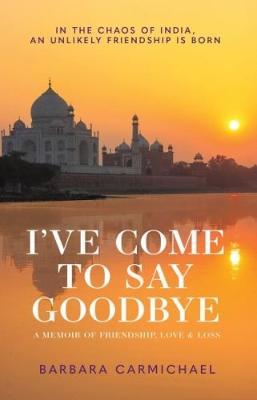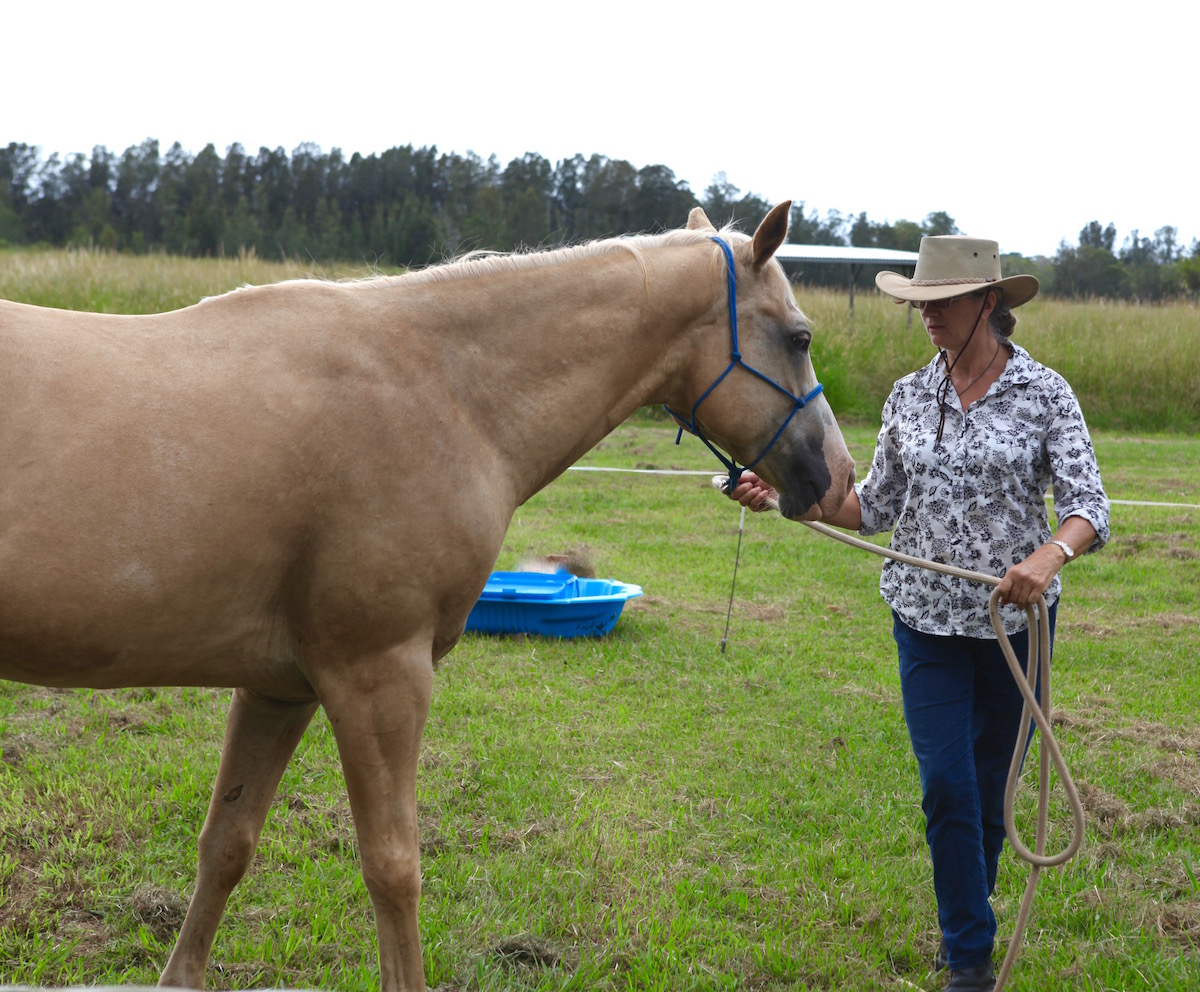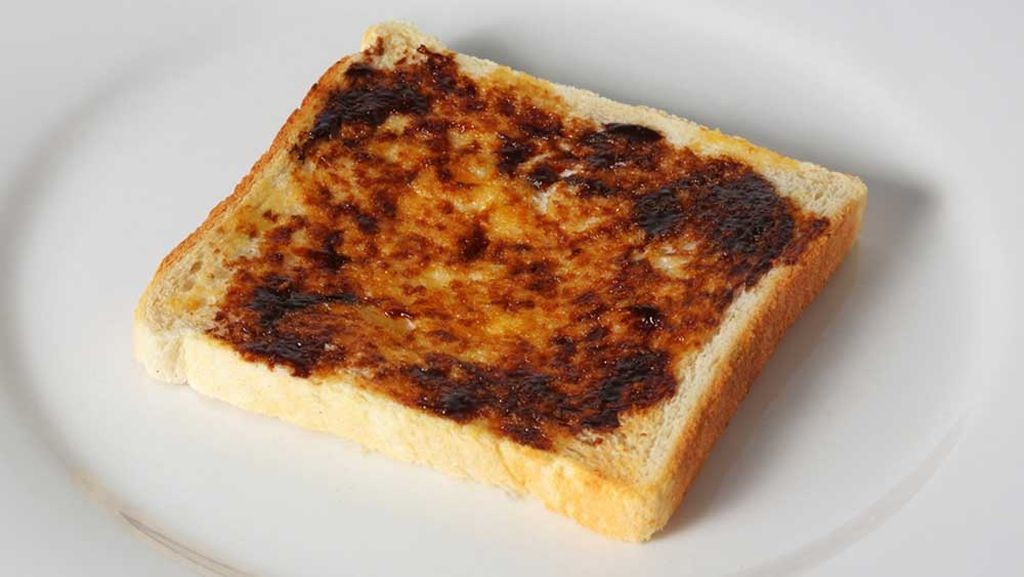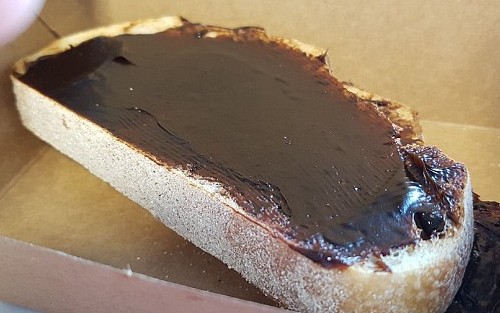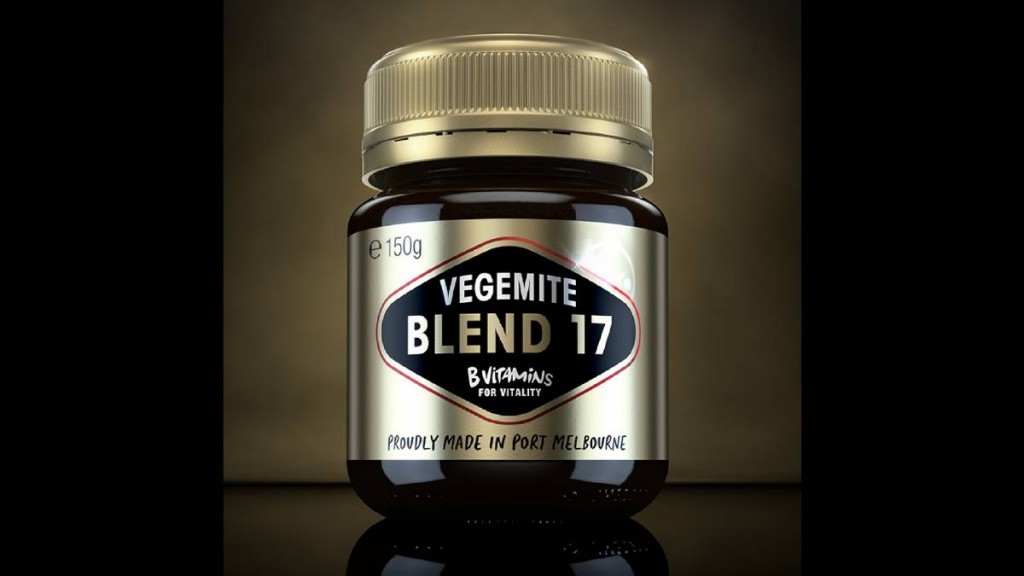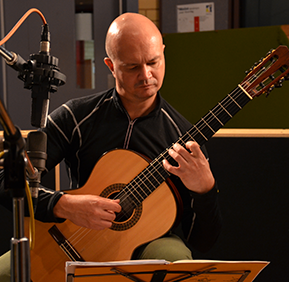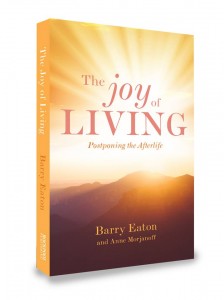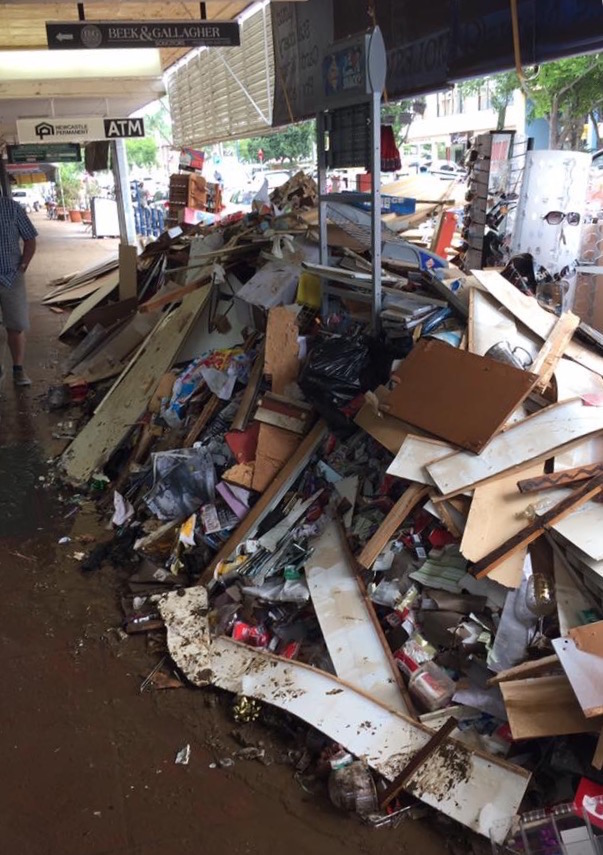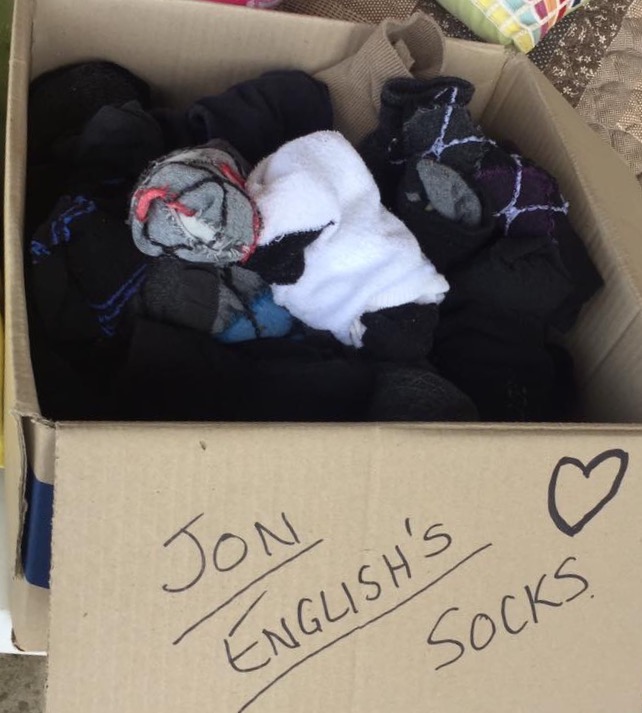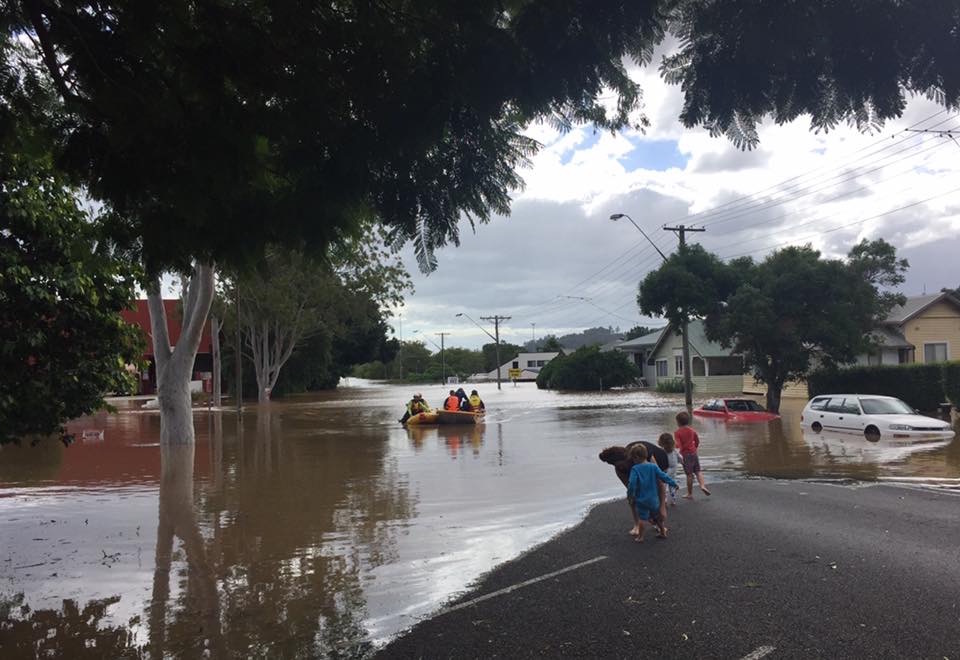The post Barbara Carmichael’s memoir of love and friendship in India appeared first on .
]]>Local Byron-based writer Barbara Carmichael’s I’ve Come to Say Goodbye is first and foremost a love story. A story of hearts that come together and bind in seemingly improbable circumstances. It’s not a romantic love story and yet the whole travelogue is a romantic adventure. The style is refreshingly simple, conversational and honest. Most memoirs written about a deep connection with India will usually take you on an overt spiritual quest. There’s the lost western soul searching for the meaning of life who happens upon a saviour (Guru) who invariably will abuse their power, but this book is more subtle than that. It gradually reveals the author’s own personal growth without any of spiritual clichés and claptrap.
Barbara’s preconceived ideas and western prejudices are slowly dissolved when she meets Tarun, a local man from Udaipur, whilst she’s accompanying a friend on a buying trip.
Thus unfolds a memoir of simple human connections which expand over a ten-year period. It feels sacred without exploiting any religious or spiritual clichés and in relegating God and religion to the sidelines there is plenty of space for what this story is actually about: two people from diverse cultures forming a solid friendship with two very old-fashioned ingredients; trust and time. The most overtly ‘holy’ thing in this book is the ‘water’ Barbara drinks – AKA gin.
It’s a light, fast read packed with travel gems and insights. Barbara Carmichael doesn’t take herself too seriously and her gentle humour reflects this. The main backdrop for this heart-warming memoir are the cities of Udaipur and Jaipur with a few sojourns around other towns and places in India as we traverse the majestical landscapes of the Northern Indian State of Rajasthan. Our unlikely travel guide is the author, who has gathered together this book from her journals from over the ten years she has spent visiting Tarun and his extended family.
There is so much historical detail that is colourful and alive. From the extensive description and the feeling of the landscapes it’s clear that Barbara Carmichael is an artist, a painter. She weaves the texture and shades of India joyously throughout the pages. She also has a realistic way of depicting the unromantic faces of India without too much emphasis on the negative. It’s a seductive tale that surprises the reader with tenderness. Nothing terribly dramatic happens and yet the minutiae of everyday life in modern India is delightfully satisfying and intriguing: seasons, weather, festivals, mythology, history, local politics, weddings, births, accidents, technology, monsoons, manmade lakes, palaces, poverty, wealth and of course death.
The book begins with the shocking and unexpected death of Tarun. The subsequent pages are, in a sense, a literary eulogy…a testimony of love, respect, gratitude and enduring friendship. Starting the book with this fact is a very honest strategic literary device. And yet I can’t help but wonder how it might have read had I also fallen in love with Tarun and his family and friends, his hopes and dreams, his kindness, his ambitions and aspirations and then shockingly lost him towards the end of the book? Having said that the sting of grief was well conveyed and neither understated nor overstated.
I’m sure choosing to open the book this way speaks volumes about Barbara Carmichael’s clear and transparent style and her modest way of storytelling. There’s a lot to like about this book. If you’ve never been to India and are thinking of going this is a must read. If you know India but have never been to Rajasthan you could learn a lot. If you’re looking for a light read about unlikely human connections – you’ll really enjoy this.
The one recurring theme which is accurately depicted in this charming memoir is that there is no country, culture, history or geography that is as interesting, sometimes shocking and utterly captivating as Mother India.
I’ve Come to Say Goodbye by Barbara Carmichael available on Amazon $19.99 https://www.amazon.com/Ive-Come-Say-Goodbye-Friendship/dp/192102478X
Reviewed by Paul C Pritchard
The post Barbara Carmichael’s memoir of love and friendship in India appeared first on .
]]>The post Equine Facilitated Magic appeared first on .
]]>I was only five years old when I first noticed that horses made me happy. My best friend, Sally, a couple of years older than me, had a perfect first pony, a grey Welsh Cob called Lucy, as safe, sound and sane as they come, and Sally was kind enough to let me spend hours with them both, grooming, or walking beside them, or even riding, or doubling together.
Looking back through the mists of time, there’s something that stands out about those early memories – and that’s the fact that the absolute best times we shared were not necessarily the riding ones. The times spent talking down by the river while Lucy munched contentedly beside us; the times when we would tuck Lucy up in her stable, out of the bad weather, and just hang in there with her, plaiting her mane or simply sometimes just leaning against her, inhaling her warm horsey smell. All three of us just about as content as it’s possible for children and pony to be.
Fast forward almost sixty years and 12,000 miles away from the country of my birth, and here I am, with a group of like-minded women having just taken part in an Equine Facilitated Learning Level 1 course – in order to become practitioners of this groundwork based course, in which there are three participants – the client, the horse and the facilitator.
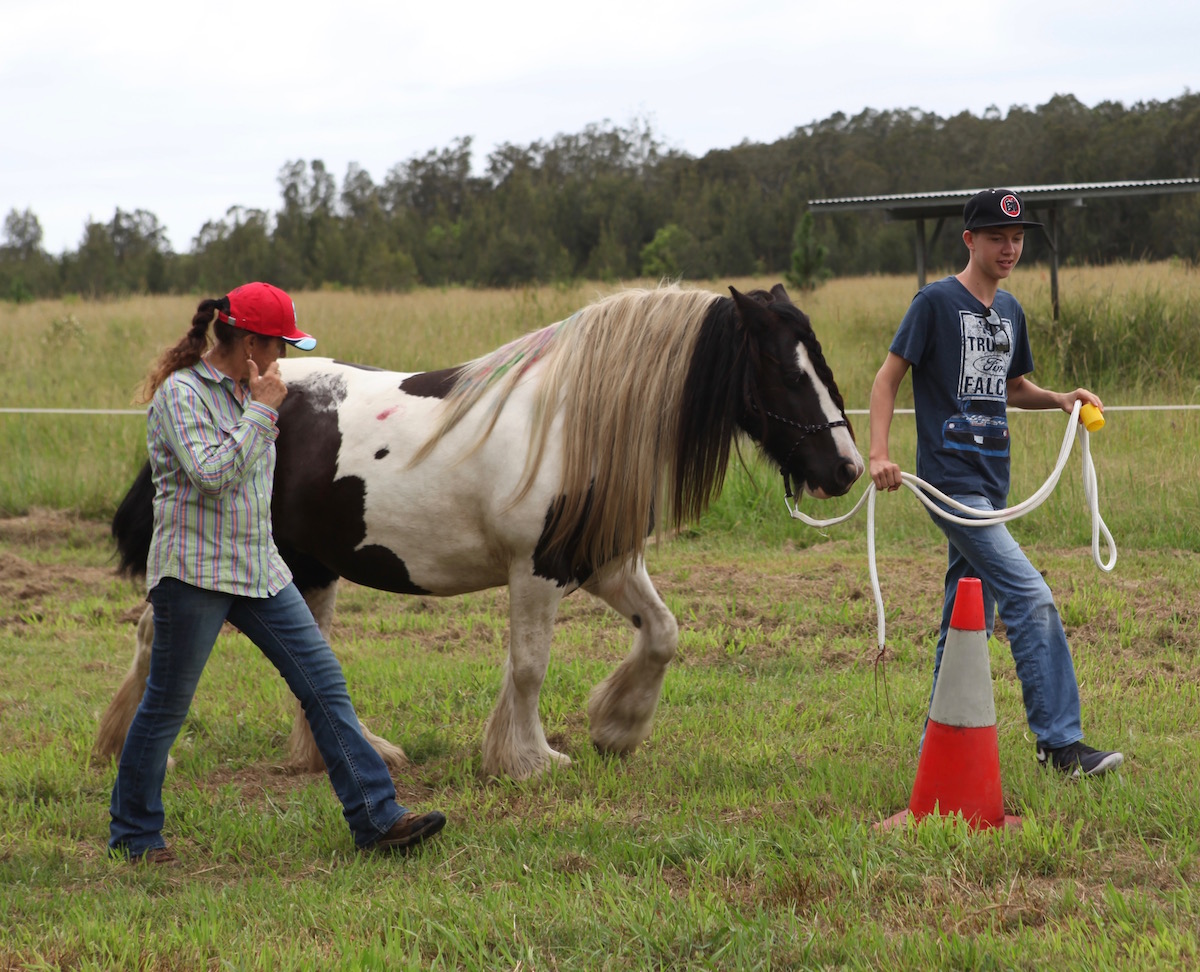
The client – 16-year-old Winter, the horse, Gypsy Cob Sweetcheeks and facilitator-in-training Sue Whatley.
After many years of horse rescue and rehabilitation, natural horsemanship and the teaching of my own methods to children, friends, family and volunteer helpers, I’m not new to the world of equine therapeutic modalities, but I decided to do this course for a specific reason – I wanted to have a qualification which will allow me to do something I’m passionate about – to set up horse groundwork sessions for our Save a Horse Australia rescue horses and for those who might benefit from time spent hanging out with horses, in which ‘magic’ is the key ingredient.
It was an intense four days! The clinic was conducted by Elaine Hughes, the guardian of EFL in Australia. Originally from the UK, but now based in Victoria, Elaine has had many decades of horse experience, and has studied with many of the ‘natural’ trainers, but it was a meeting with Frank Levinson, the founder of EFL, that prompted her interest in the program. When she and her family of four and two-legged friends moved to Australia, Elaine partnered with Sally Francis to create AEFL. Elaine teaches the clinic with her two off-siders, Louise, otherwise known as Irish, and her partner Dave.
What I witnessed as we moved through the four days into a deeper understanding of the horse and human bond, culminating in working with ‘real’ clients on the last day is that EFL seems to substantially deepen people’s understanding of their personal issues and feelings, and that some level of fundamental relaxation occurs.
But the careful – almost invisible – guidance of the facilitator also allows children and adults to experience, as Elaine says: “a huge surge in self-esteem and confidence when they realise they can create boundaries and direct a pony or horse to move in a particular way.”
Children who have stopped speaking; people with anxiety and depression; children and adults with physical or intellectual(or both) disabilities; people who are simply afraid of horses and want to learn not to be – all of these scenarios (and more) were presented to us over the four days, either in theory or practice with role play, or clients. It was an incredibly fulfilling experience for all of us to take our already existing horsemanship skills and our rapid immersion into EFL and to witness the ways in which we could help both ourselves, the client and the horse develop what I can only describe as an elasticity of brain and body. We learnt quickly to allow the space for the session to evolve into whatever is most fulfilling for the client and the horse!
The next step in becoming an EFL practitioner for us all is ten hours of sessions with clients, so watch this space!
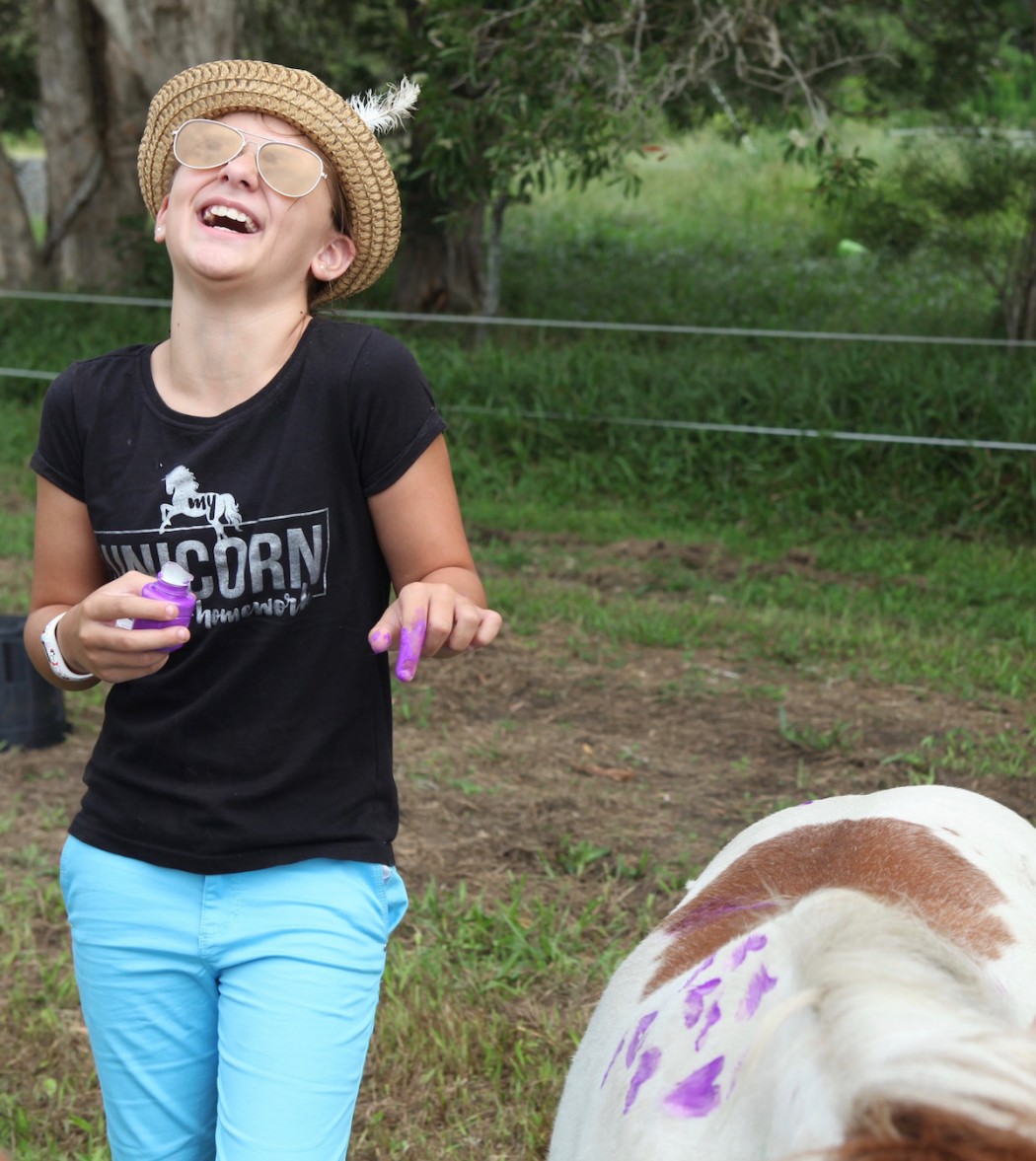
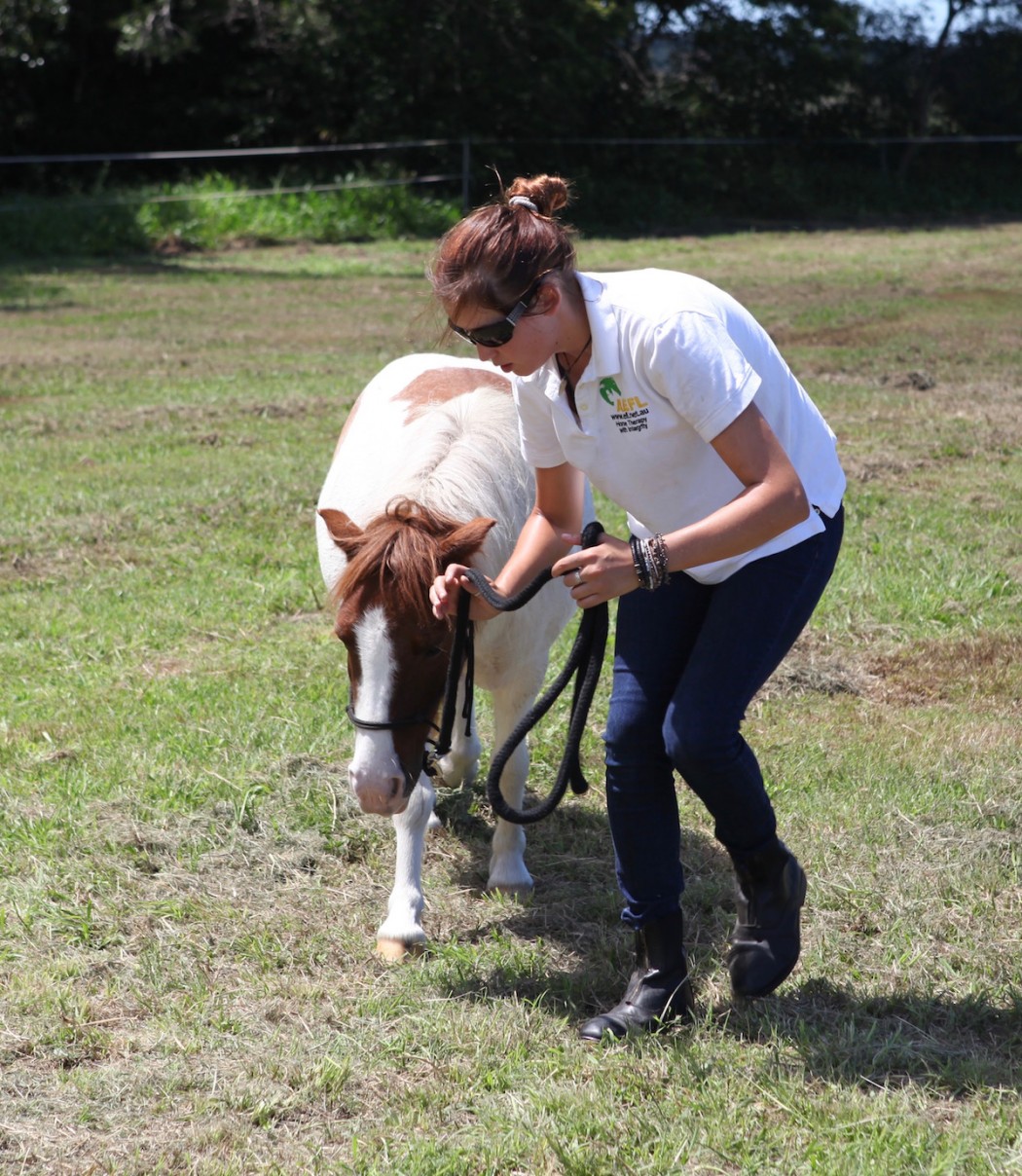
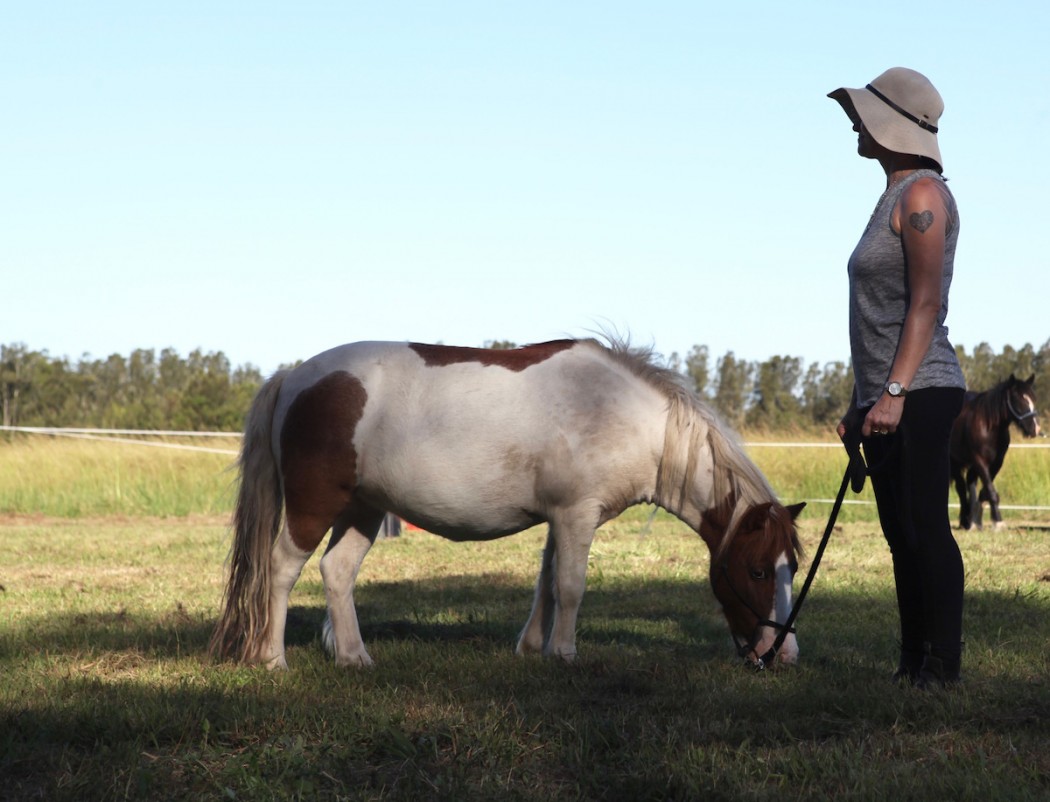
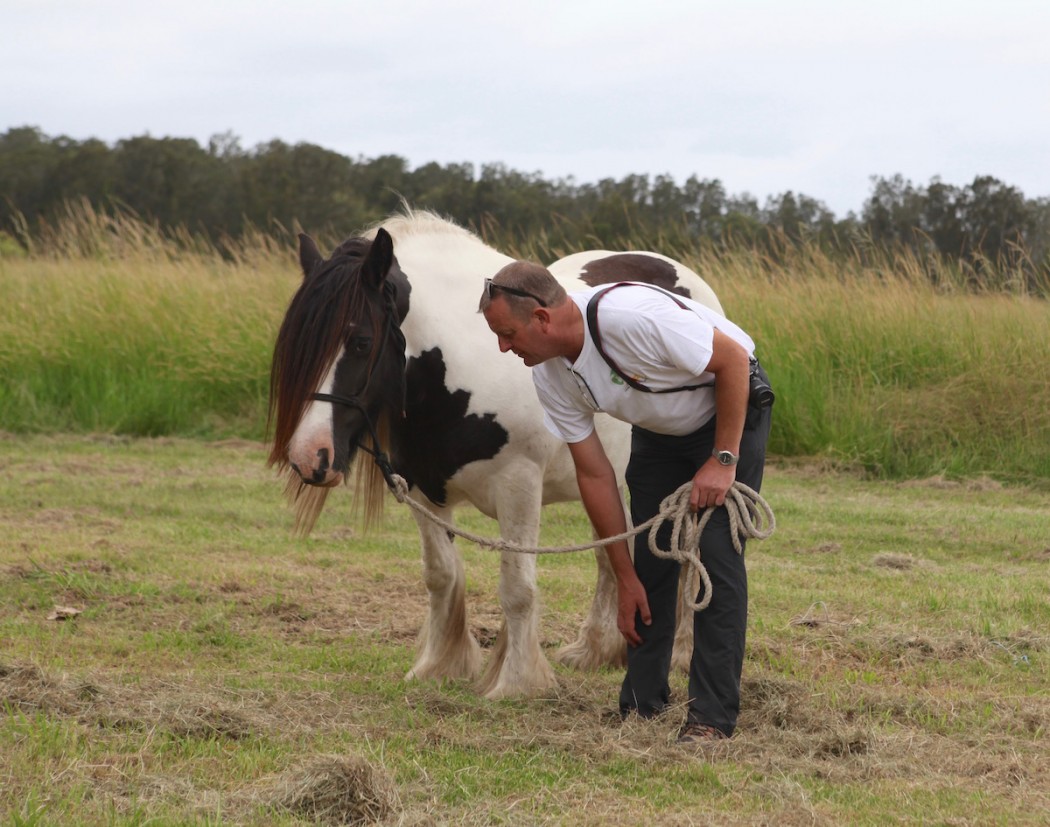
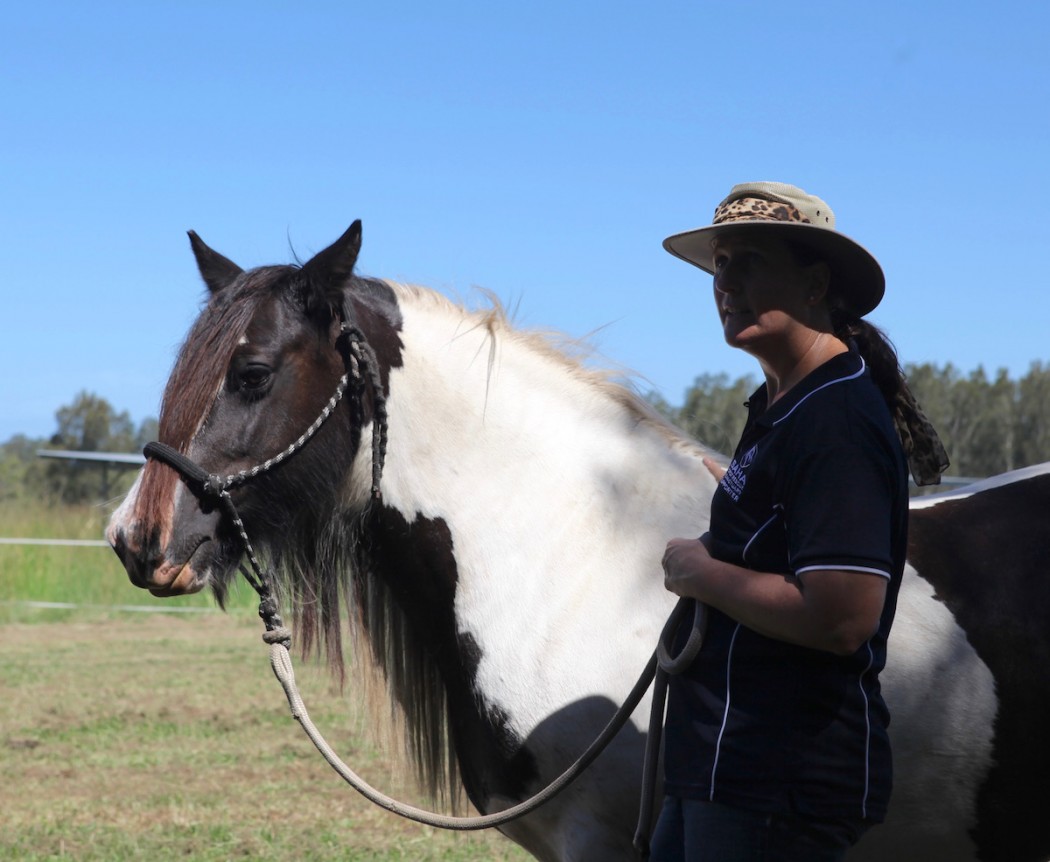
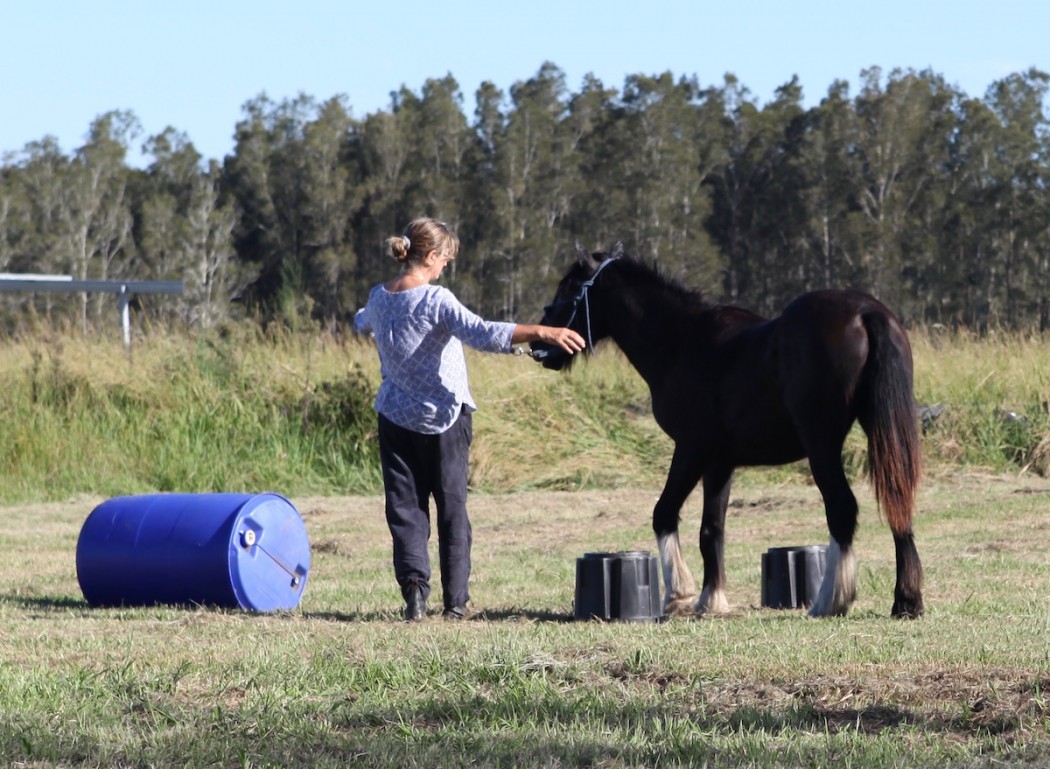
Captions: Sometimes it’s fun to just ‘paint a pony’. Irish aka Louise, gets down to Nina’s level. Magnolia hanging out with Nina. Dave shares a moment with Sweet Cheeks, Cathy Binz my fellow SAHA trainee facilitator. The little yearling Maddie and I enjoy some bonding time.
For more information on EFL go to: https://www.efl.net.au/
AEFL is the Platinum Training Provider for IICT – International Institute for Complimentary Therapies.
Candida Baker is President of Save a Horse Australia and editor of HubVibes. This column first appeared in the March edition of HubVibes
The post Equine Facilitated Magic appeared first on .
]]>The post Warning: Tamper with Vegemite at your peril, writes Robert Drewe appeared first on .
]]>After only six months of Vegemite deprivation overseas in the eighties I began thinking of it constantly. I badly needed a fix. Intending visitors from Australia were begged (eventually commanded) to bring jars with them. No one took my pleas seriously. The Vegemite-less weeks and months ticked on.
At last! From a friend’s luggage appeared the cheery red and yellow label of my childhood! That whiff of yeast! The familiar surface sheen! The strong odour, the salty taste! With my urging, bemused French acquaintances were soon gamely trying Vegemite on their baguettes; wary but polite Californians and Canadians were spreading Vegemite on their rolls. They all said it was disgusting.
It wasn’t that they couldn’t get terribly keen on Vegemite – they thought it the most revolting foodstuff they’d ever encountered. It failed at every level: looks, smell, texture, taste. To them it resembled glistening dark stuff not fit for repeating in a family newspaper much less human consumption.
I felt hurt on Vegemite’s behalf. And Australia’s, too. It was like they’d scorned our beaches, wines, weather, Don Bradman, Sidney Nolan, Patrick White and Phar Lap. I was defensive. I disparaged their stupid foreign breakfast spreads: Marmite and Cenovis, peanut butter and jelly. Chocolate, for goodness sake. Nutella. Any more British derision and I would’ve brought up breakfast black pudding.
Then I tried a calmer, more educational approach. The secret, I tried to explain to them, one passed on from generation to generation of Australians over the breakfast table, was to appreciate the subtlety and delicacy of Vegemite.
This will come as no surprise to those of you who are reading this at breakfast with a trusty jar of Vegemite close at hand. “For a start,” I informed my foreign friends, “Butter first.”
“Then what you do is dab a little bit here and there over the buttered bread or toast,” I instructed. “You never smear it on thickly. That’s a Vegemite no-no. Stifle the natural urge to cover the entire slice up to the edges. Use a light hand, and only the tip of the knife, and just speckle the Vegemite gently and randomly over the toast.”
Casually, even with a touch of devil-may-care, but serious intent, I demonstrated the approved method. “Like this,” I said. “You mustn’t coat the bread. (My goodness, you’re not painting a wall or laying cement with a trowel!) Try for the desired stippled effect. The acid test is this: if you have correctly applied your Vegemite in sporadic flecks the buttery surface of the bread or toast should still be intermittently visible underneath.”
Of course, I went on to remind them they were dealing with an actual foodstuff and, all appearances aside, not changing the oil filter on their car. I explained après-Vegemite etiquette, passed on sternly from mother and grandmother. To never put a Vegemite-encrusted knife back into the butter (or margarine, if you insist) container.
A question arose and was answered. “Yes, it’s permitted for the various Vegemite dabs and the previously spread butter to run together on a warm slice of toast, to even recklessly swirl and intermingle, as on an artist’s palate. But never allow them to intermix in the butter dish.” Even Australians disliked the look of that, I told them.
Did they take any notice? Not at all. Especially the Americans. They were so used to lavishing peanut butter over everything that they smothered Vegemite on the test slice I provided. Well, they deserved what they always get, a yeasty slap in the face.
Well, we got Vegemite back from them earlier this year when the dairy company Bega bought Mondelez International’s Australia and New Zealand grocery and cheese business.
Nostalgia aside, the reason Vegemite is on my mind this week is that Bega is now attempting to take Vegemite upmarket with a new, more expensive version, Vegemite Blend 17, sold in precious artisanal packaging that includes an unnecessary cardboard box, a gold-coloured lid and a price tag of double that of a traditional jar.
Asked what happened to Blends one to 16, Vegemite’s marketing director, Ben Hill, explained: “The name Blend 17 simply refers to the year 2017 we have released it in.”
Oh, dear. Remember Vegemite Singles, iSnack 2.0, Cheesybites, My First Vegemite, Chocolate-and-Vegemite. All recent Vegemite marketing failures. Tamper with it at your peril. You don’t need a more affluent demographic. Everyone likes it as it is.
Robert Drewe’s latest novel, Whipbird is published by Penguin and is available here: penguin.com.au/books/whipbird
The post Warning: Tamper with Vegemite at your peril, writes Robert Drewe appeared first on .
]]>The post Horses and humans – and the shadows between appeared first on .
]]>There’s something so enticing about the drive to The Channon. Enveloped by green rolling hills, the small village offers visitors an eclectic offering of outings – from bushwalks up to Protestor Falls in the Hills, to the much-loved Channon market on once a month.
For its size, The Channon punches well above its weight in the art stakes with its beautiful Teahouse gallery in the tiny village, and with a large population of practising artists.
Artist Andi Neilands had a change of direction a few years ago, when she left behind a long career at TAFE teaching IT and 3D modelling and animation to study art. This show, Virtual Shadows, is the result of her advanced diploma with an emphasis on light and shadow to create edges, form and volume.
It’s a cohesive exhibtion – it could perhaps be called humans and horses, since the works are of men, women and horses. But it’s the women who have the relationship with horses, the men are incidental and somewhat exterior to the main body of the work. If a shadow of Neilands former career shows itself, it’s in the precise techniques she’s used to replicate the works in various media, so that a drawing becomes a painting, becomes a bronze. (Many of the works are available as prints or reproductions.)
One small area of the exhibition concentrates on one peson – artist Ken Johnson cialis 20mg prix who acted as a personal mentor to Andi – particularly whilst she was coming to grips with the art of sculpting. Johnson is portrayed in a bust and on paper, and Neilands pays tribute to Johnson’s emotional depths in all three works.
One of two of the most expensive work in the exhibition, a bust of Bucephalus, Alexander the Great’s warhorse, is carved out of white carrara marble from the Michelangelo quarry. It has an almost transluscent quality, and the proud horse’s head takes an easy pride of place. Interestingly its ‘shadow’ are smaller heads printed in plastic by 3D printing. From the most natural, to the most unnatural material on the planet. Both, these days as seemingly durable as the other.
The messages behind the mediums are subtle. Less subtle but interesting to a fellow horsewoman, are the works depicting the sometimes almost erotic, always highly emotional relationship between women and their horses. My personal favourite is a small clay maquette of a horse lying down a woman sitting by its stomach with her head on her lap, and the horse’s head gently turned towards her. The title of the work is RUOK? and for me it’s a reminder of how, although as a human it’s my job to look after my horse, every now and then in my dark days my horses have turned to look after me.
The imperative for an artist behind a work of art is always fascinating. As the viewer what do we see? As the artist, what did the creator intend? Perhaps the most personal of all is a bust of Neilands’ father – My Father, My Hero – drowned at sea in a boating accident in 1957 having saved the lives of Neilands, her sister and her brother. The bust of her father held great emotional signifcance for the numerous descendants of the tribe at the opening – reinforcing the notion that in any form of art it is the story that is contained within it that is the emotional connection to the outside world.
I will be interested to see the expansion of this artist’s work.





Virtual Shadows is showing at The Channon Teahouse & Gallery in Standing Street until December 10.
For more information on her works go to andineilands.com or contact Andi on [email protected]
The post Horses and humans – and the shadows between appeared first on .
]]>The post Everything Lismore in one new App appeared first on .
]]>Co-founder Simon Mumford describes the smartphone app as “everything Lismore – people use their smartphone severy day and we are connected to each other more than ever before, so we wanted to design a business where all your local information can be viewed by pushing one push of the button on your mobile phone,” Mumford says. “What we’ve created is something unique and specific to the Lismore region, something easy to use and absolutely free.”
Digital content editor and journalist Will Jackson says the app would be a one-stop shop for local news and sport, things to do and events, community contacts, trades and classifieds. Jackson says a big focus of the app would be keeping users informed of what was happening in the community with news articles published throughout the day specifically for the people who live and work in the Lismore local government area. The news agenda of the Lismore App would be a mix of council, crime, entertainment, social issues, sport and whatever other quirky interesting stories people wanted to share with the community.
“I definitely believe in reporting what’s in the public interest, not just what’s interesting to the public. Lismore is such a diverse community, and being fair to all sides is important,” he says. “My approach buy viagra with paypal is to celebrate what’s good in the community, expose what’s not so good and document what’s important. Most importantly the app will be an entertaining read.”
The Lismore App is the first foray into this unique model by the NSW Local App Company which hopes to eventually launch apps for communities around the region.
“The Australian media is going through what they call a period of ‘disruption’ at the moment – the old business models no longer works,” said the app’s advertising and marketing manager Mark Colegate. “We’re hoping that with a fresh, innovative approach on a platform that the people of Lismore use every day, the local app model can actually be financially sustainable. An important element of the Lismore App is that we offer display, trade and classified rates at very affordable rates compared to traditional media. We have kept our business costs very low so now any business can afford to advertise which, with high usage, will increase their profitability leading to more jobs being generated in the Lismore region.”
The Lismore App is available to download on Android from the Google Play app store: https://play.google.com/store/apps/details?id=com.app.p1792HI
iPhone support is to come at a later date.
You can also ‘like’ the app’s Facebook page at facebook.com/lismoreapp <https://facebook.com/lismoreapp> .
The post Everything Lismore in one new App appeared first on .
]]>The post Baby talk – but not from babies, writes Robert Drewe appeared first on .
]]>The other day I heard a hospital administrator on the radio talking knowledgeably about hard-working health professionals who were “speechies”, “occies” and “respos”. These jobs were new to me. It turned out she was referring to speech, occupational and respiratory therapists.
So the Australian partiality for baby talk has now entered the fields of physical and mental health. Mind you, the national love of diminutives was already present in medical circles. For example, we’d always called physiotherapists “physios” and gynaecologists “gynos”. But I hadn’t realised how widely the habit was spreading.
We’ve long used diminutives for such jobs as ambulance driver (ambo), book maker (bookie), bricklayer (brickie), carpenter (chippie), farmer (cocky), garbage collector (garbo), journalist (journo), milkman (milko), musician (muso), politician (pollie), postman (postie), sub-contractor (subbie), tradesman (tradie), truck driver (truckie), wharf labourer (wharfie), and prostitute (prozzie),
Injured at work? Even at “smoko”. Better apply for “compo” (compensation). Or you won’t be able to afford your “reggo” (car registration). Careful you don’t become a “dero” (homeless person).
Interestingly, while everyone knows “chalkie” is the nickname for teacher, it has never really caught on in Australia. For some reason teachers remain teachers. (Until computerisation, “chalkie” also applied to the stock exchange employees who wrote stock prices on chalk boards.)
Until a decade ago I’d never heard “boilie” (for boiler-maker) and “firey” (for fire fighter). Or, until more recently, “cranie” (crane driver); “crownie” (not just Crown lager, but crown prosecutor); “shoppie” (retail shop assistant); and “towie” (tow-truck driver).
Or, for that matter, “Cento”, for the Centrelink office, responsible for unemployment pensions; “povvo”, a poor person; and “deso”, a designated (and abstaining) driver of drinkers.
For reasons known only to Australians, a biker and a surfer anywhere else are a “bikie” and “surfie” here (but never in actual biker or surfer circles).
In Melbourne, you’d know Broady was Broadmeadows, and in Sydney that Parra was Parramatta. In Perth you’d be au fait with Cott, Subi, Freo and Rotto. If you follow AFL or the two rugby codes, you’re a “footy” fan. The other code, known here and in the US as soccer, however, insists on “football”.
Why do we indulge in such baby language (talking about bickies and choccies – and choccy bickies!) long after our third birthday? Why do we eat at Macca’s and buy fuel at the servo? And give prezzies at Chrissie, and drink cuppas and tinnies and coldies, and cook snaggers at barbies (unless we’re veggos and prefer avos), and support the Salvos and Vinnies, and wear trackies or boardies in the arvo?
Because we want to be liked. As pathetic as that sounds, Dr Nenagh Kemp, a senior lecturer in Psychology at the University of Tasmania, says “Australians have an intuitive feeling that these words make social interaction more informal, more friendly and relaxed.”
Dr Kemp’s work on spoken Australian English is helping to build up a more complete picture of what it means to be Australian today, and how choosing to use certain Australian words such as “arvo” and “footy” signals national identity. As she told the Australian Geographic Society which sponsored some of her research, “It sounds obvious: we make words shorter to save us a bit of time and effort. But some diminutives actually make words longer, like Tommo for Tom. And we don’t really save a lot of time by saying barbie instead of barbecue.”
With more than 4300 recorded in our lexicon, Australians use more abbreviated words than any other English speakers. Word lists collected in the past few years show that older Australians are more likely to think of slang with “o” endings (muso, smoko). Young people use these less frequently. Modern trends are to affix an ‘s’ to the first syllable (think “awks” for awkward — which it is).
“If you’re someone who speaks to groups – say, a politician – it could be interesting to know whether these kinds of words make you seem friendlier, or perhaps more condescending,” said Dr Kemp. (Too late, Kevin Rudd.)
“Some people accuse younger generations of spoiling our language with all these diminutives. But the earliest examples are from the 1800s. It’s a long tradition, not a modern laziness.”
Despite that, she can’t see herself adopting some current language trends. “I’m kind of bemused by the trend of saying “mobes” for mobiles, or “totes” for totally. I use some shortened words, but those just sound silly to me.”
For myself, I draw the line at the current words “lappy” for laptop, “Facey” for Facebook, “petty” for petrol, and “devo” for devastated. Anyway, in my teenage daughter’s case, “devo” actually translates as “mildly upset”.
“Deffo”, as she says. “Definitely.”
The post Baby talk – but not from babies, writes Robert Drewe appeared first on .
]]>The post Embracing technology – at any age appeared first on .
]]>As we age do we feel that we have missed the boat when it comes to being cool with Facebook, Twitter, blogs, websites, Google+ and all that social media offers?
After the book The Joy of Ageing, Esoterically was launched, the editors realised that a website was needed to sell the book online and also to expand on the topics raised in the book.
The inspirational Anne McRitchie, who had retired some years earlier from her management position at IBM, invited a group of older women (most in their seventies) from the Northern Rivers to develop a website. We all embarked on a steep learning curve in order to get to launch. Our common purpose was to fill a gap we all felt existed for the ageing population. Bombarded online and in the media with celebrity gossip, sensational news and the latest and greatest, many of us elders feel that there is very little on offer in the media to inspire us.
So what to do? Should we sit back and give up, feeling invisible and irrelevant? Launching a website felt like a great start to addressing these questions. What was the state of our computer knowledge? Did we need to upgrade computers and/or skills?
With the book as inspiration, we committed to working together to develop content for the website. Anne initiated Skype calls for us to meet once a week, so that was a first step. Download Skype, upload a photo and invite friends. One new thing learned!
Back to content. Okay so we were going to be the writers until we had enough content for the website to be launched. What would be the first topics that we could write about with authority from our own experience? Relationships, the joy of ageing, self-care, exercise were some of the topics that were written about in the book, and that we had been reflecting upon in our own lives. We felt these topics applied to everyone, regardless of age or experience, and so they laid the foundations for the website.
We needed editors, so turning our hand to editing each other’s writing came next. This step meant no imposing, respecting the writer’s integrity and asking for clarification if we did not understand any part of the article. We were clear that the articles had to be accessible to the readers. There was much to be learned about using all the relevant tools offered in Word, such as formatting, spacing and hyperlinks.
You can’t have a website without photos. Who had iPhones? Right, there were are our photographers. As we went along we were very blessed to connect with some professionals who generously gave us some of their photos to use. With time and practice, we were also able to start using our own photographs.
Next was a choice of platform for publishing. Two of our team members, Anne and Gayle spent time researching different options. Weebly was chosen for its clean design, flexible options and ease of uploading content.
An experienced graphic designer was employed at this point to oversee and tweak the layout. Finally the site was launched and you can view it here.
But even ater the website was up our work was not completed; we needed to learn how to upload fresh content and new inspirations to keep expanding the pages on the website. And from there we learned Mail Chimp so that we could put out a monthly newsletter for our subscribers.
We have all been inspired by the way we worked together as a group, and what can be achieved when people work together harmoniously, keeping things light and playful where possible. We’ve shown ourselves that one is never too old to learn new things regardless of how complex they may seem at first! In the words of one team member: “One of the most beautiful things about the Joy of Ageing website team is that we are all learning and expanding through our commitment to serve humanity with the book and the website. Most of what we are currently doing, as individuals, we did not know how to do before we decided to build a website…we all have training wheels on, all of the time.”
Bernadette Curtin
The post Embracing technology – at any age appeared first on .
]]>The post Classical guitar meets a full Symphony Orchestra appeared first on .
]]>Matthew, described as ‘”a guitarist of superb technical accomplishment and a musician of perception and style” will perform the complete guitar concerto of Joaquin Rodrigo’s “Concierto de Aranjuez”. This orchestral masterpiece blends Spanish classical guitar with a full symphony orchestra – a rare feat in music and it has arguably made this work one of the most famous 20th century orchestral compositions.
The music line up also includes Bartok’s Concerto for Orchestra, 4th mvt, Tchaikovsky’s Symphony No 5, 2nd mvt and the Sibelius Symphony No 5, 3rd mvt and excerpts from the fabulous film “Babe” by Australian composer, Nigel Westlake. acheterdufrance.com Sonya Lopes will conduct again in this concert series.
The Whitebrook Theatre at Southern Cross University is the location for these upcoming performances on May 27, 7.30pm and May 28, 2pm.
Book your tickets online at www.trybooking.com/PLBK
The post Classical guitar meets a full Symphony Orchestra appeared first on .
]]>The post Discovering the Joy of Living through a journey with cancer appeared first on .
]]>My life changed drastically the day my ear nose and throat doctor informed me that what I naively thought was just something caught in my throat, was actually a cancerous throat tumour. Immediate surgery was the next step and “perhaps that may solve the problem”. The very word cancer is enough to send a chill up anyone’s spine, let alone when it comes in a medical diagnosis.
The burning question for me was: what next? Would surgery solve the problem or was this the start of interminable medical treatments?
Surgery did not remove all the cancer cells, and to top it off a biopsy of my thyroid also showed signs of cancer and would have to come out. Good grief, more surgery! Then following that, I faced the daunting prospect of radiotherapy, or even chemotherapy, to kill those recalcitrant cells.
The big dilemma – would I go mainstream or alternative? More lost sleep, and a decision only I could make. One thing I knew intuitively was that I would survive the ordeal – somehow. My ticket to the afterlife would not be stamped just yet.
Over the years I had chosen the holistic approach, preferring alternative procedures when health problems arose. Of course there are times when we all need to visit a doctor, and take prescription medicines. Now with my thyroid gone I faced a lifetime of taking Thyroxine tablets to provide the hormone not being naturally generated by my body.
As a general rule I prefer treatments like acupuncture, osteopathy, bush flower essences, natural medicine and spiritual healing. So I was faced with the biggest health decision of my life.
During deep meditation I received explicit instructions from my master guide whose wisdom has played an invaluable role in my life. Spirit wanted me to combine mainstream and alternative therapy and afterwards write a book about my experience. The story would help alleviate fear and inspire people to take a positive role in their healing.
My decision made, I agreed to radiotherapy, following my guide’s recommendation. I refused chemotherapy. I could then open myself up to the full range of holistic solutions and trust that my footsteps would be led in the right direction. They were.
My family was surprised, fearing that I would reject mainstream medicine, and end up as another disastrous statistic.
Synchronistically, one-by- one, a variety of therapeutic support options dropped into my lap. A healer friend offered regular energy clearing to offset the effects of radiotherapy; a very talented hypnotherapist guest from my radio program , RadioOutThere, prepared me for the thirty five hospital treatments I was facing, and I was loaned a crystal bed from John of God’s healing centre in Brazil, which I had visited in 2008.
Since being introduced to the rune stones over 25 years ago I have found them an invaluable way of tapping into my inner wisdom. Each message I received from the runes during the course of my treatment proved uncannily accurate. They clarified some of my inner turmoil and helped me understand what was happening at the time.
My friends and family gave me widespread support. My partner Anne who co-wrote ‘The Joy of Living’ from her perspective, was a vital and loving part of my journey. My son Matt provided me with the backup I needed most in the early stages. Matt has written his thoughts in The Joy of Living about the way events unfolded. I also appreciated a local congregation praying for my wellbeing, even though they didn’t know me.
When I anxiously started radiotherapy, fortunately I was emotionally and spiritually prepared. The specialist radiation staff at Royal Brisbane and Women’s Hospital was caring and supportive throughout the whole process.
Yes, I did face challenging times, but combining mainstream and holistic practices worked exceptionally well for me, and four years down the track I am still cancer free. Looking back, my life has changed in ways I wouldn’t have expected, and I’m a better person for the whole experience.
I believe it’s important to take some personal responsibility in challenging times like this. To collapse into fear is not the answer, nor is it always enough to simply expect one form of therapy to provide all the answers.
Barry Eaton is the author of The Joy of Living: Postponing the Afterlife (Rockpool Publishing $27.99), now available where all good books are sold and online at www.rockpoolpublishing.com.au
The post Discovering the Joy of Living through a journey with cancer appeared first on .
]]>The post Jenny Dowell on life after Debbie’s departure appeared first on .
]]>I’d always said to friends in Melbourne that if Goonellabah flooded it was time to build an ark! Well, we had water throughout our living area when the drains failed to cope with the 400mm that fell in 24 hours. But that was trivial compared to the mess that Debbie left when she finally departed. The Wilsons River reached 11.6m – close to the 1974 big flood and the 10.6m levee was overtopped, as we always knew it would be when the inevitable big flood came.
When the flood waters receded and all of us got down to work, cleaning, laundry and door knocking to check on people’s welfare, I heard my fair share of distressing stories but even when people had lost most of their possessions, there was a general response “I’m OK, there are people much worse off than me”.
Through the tears there were often smiles and hugs as people connected like never before. The Lismore Come to the Heart symbol has always been more than a marketing logo. Many of us have worn the little heart badge as a sign of pride that we live in Lismore but after this flood event, the Heart has become a symbol of rebuilding and connection to each other. When the Black Sombrero in the CBD hung a Heart flag on its door to indicate it was reopening, requests came for more, so sewing bees were arranged at the Black Sombrero for these flags to be produced for other businesses as they reopened.
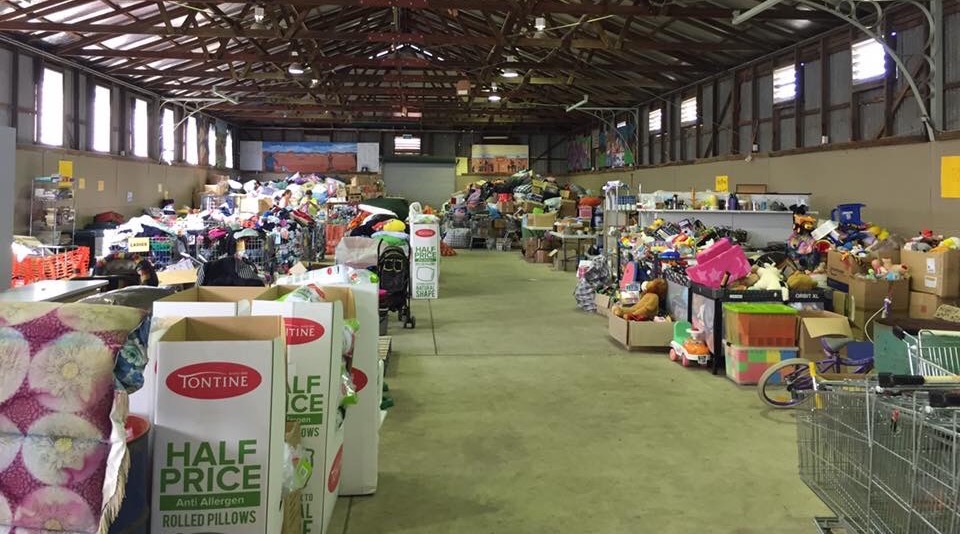
Lifeline NR set up in the Pavilion at Lismore Showgrounds to help people affected by the flood by distributing donated goods.
The heart badge became a sign of determination and resilience and council has noted a steady stream of residents buying the badges to wear and give to others to lift their spirits.
The stories of loss and grief will continue for many weeks and months and even longer for some but this community is strong and connected with someone always at hand to bear the load when things get too hard.
Thousands of people evacuated and while much of the contents of homes and businesses was secured and lifted, the height of the flood and the force of the water was greater than most people expected. As readers will have seen, the damage to homes and businesses in the CBD, North and South Lismore and parts of East Lismore was immense with thousands of tonnes of damaged goods piled up on footpaths as the recovery commenced.
The good thing – from every disaster, the strength of the community is demonstrated in the very difficult and long recovery stage after the emergency has passed.
An army of volunteers mobilised through Lismore Helping Hands Facebook page to attend thousands of homes and businesses. These volunteers helped clean premises and provide essential material aid and food to the people affected. Hundreds of RFS and SES volunteers from around the state provided much of the heavy lifting and high pressure hoses to help clean out buildings as people tried to salvage important items.
As the emergency passed, the disused Lismore Railway station was a hub for the volunteers to form teams and for people to get food, bedding and clothing. Lifeline’s regional warehouse received tonnes of financed items and just as quickly was distributing goods to affected people. It wasn’t long before it became obvious that the warehouse was simply too small to cope with the supply or demand so a league Pavilion at the Showgrounds became the central collection and distribution centre not just for Lifeline but for many other charity groups.
The official NSW Government sponsored Flood Recovery Centre was also established in East Lismore to provide people with a one-stop-shop for advice on insurance, grants, fair trading, small business, primary industry assistance and more.
People who were unaffected by the disaster flocked to help and shopping in the supermarket in mud spattered clothing and rubber boots didn’t even cause a raised eyebrow, but the emotional toll of the flood was obvious despite the generally positive spirits. In the days after the water had gone, every heavy rain shower brought back feelings of dread. The need for material aid for affected residents was also obvious and the community responded.
Lifeline Northern Rivers warehouse in South Lismore was soon overwhelmed by the sheer volume of donated clothing, furniture and household items so the opening of the Pavilion at the Showgrounds provided not only a much needed large space for donations and distribution but the opportunity for all charities to work together.
The Helping Hands hub remained the centre for donations of non perishable food, willing hands for heavy lifting and cleaning and teams of skilled people to undertake welfare checks in the most vulnerable people until it closed on April 23.
Our council, including Mayor Isaac Smith, has been magnificent as were the emergency services volunteers who came from far and near to help. Among the volunteers who put their own lives on hold to help others, new leaders merged with the temperament and skills to mobilise teams of people who had never worked together before. In my opinion, those leaders – many of them in their early 20s – will be names to note as community leaders of the future.
Three weeks after the flood, there is still much to be done. Hundreds of residents are not back in their homes and some may never be able to return. Many people will continue to need material help, many more will require emotional support and fundraising will continue to be required on top of the welcome financial assistance from government.
It is hoped that the Lismore Helping Hands Facebook page will continue with people linking up to help each other not just in relation to this flood event but for the future.
Volunteers can only do so much and it would be ideal to see an existing larger organisation take on the coordinating role of overseeing the wellbeing of flood-affected people into the longer term. Volunteers will still be needed to contribute a few hours or a day when they can but I think that the overarching coordination requires a paid project officer with the structure of a larger organisation to provide the framework. We cannot let the aftermath of the flood result in a loss of community cohesiveness or wellbeing. That would be an indictment on all of us and a tragedy that we must avoid.
The post Jenny Dowell on life after Debbie’s departure appeared first on .
]]>